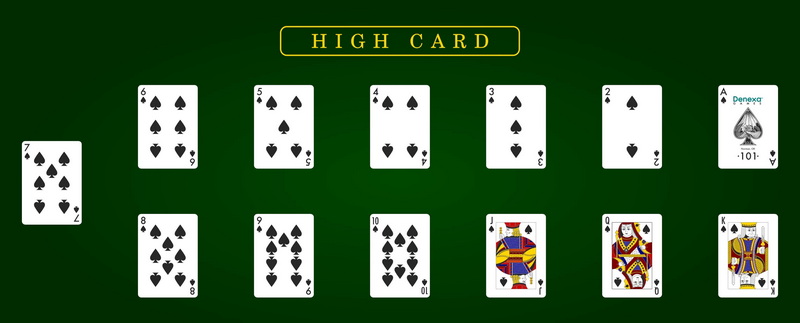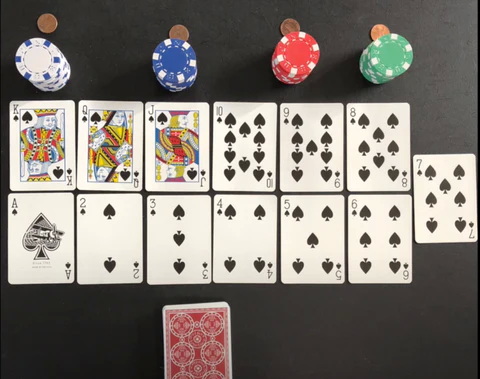Content Menu
● Introduction
● The Basics of Faro
>> Equipment
>> Objective
● Setting Up the Game
>> The Tableau
>> Player Positions
● Gameplay
>> Starting the Round
>> Drawing and Resolving Bets
>> Continuing Play
● Advanced Betting Options
>> Betting on the High Card
>> Coppering
>> The Last Turn
● Special Rules and Situations
>> Pairs
>> Dead Bets
● Strategy and Odds
● Historical Significance
● The Decline of Faro
● Conclusion
● Frequently Asked Questions
>> 1. What made Faro so popular in the Old West?
>> 2. How does Faro differ from modern casino card games?
>> 3. Why did Faro decline in popularity?
>> 4. Can Faro still be played in casinos today?
>> 5. How does the "coppering" mechanic in Faro work?
● Citations:
Introduction
Faro, a popular gambling card that originated in France during the late 17th century, quickly spread across Europe and eventually became a staple in American casinos during the 19th century[2]. This fast-paced and easy-to-learn game was a favorite among gamblers in the Old West, with legendary figures like Doc Holliday and Wyatt Earp often serving as Faro dealers[9]. Although its popularity has waned in modern times, understanding how to play Faro offers a fascinating glimpse into the history of gambling and the American frontier.

The Basics of Faro
Equipment
To play Faro, you'll need the following:
1. A standard 52-card deck
2. An additional set of 13 cards (one of each rank)
3. Betting chips for each player
4. A penny for each player
5. A dealing box or "shoe" (optional but traditionally used)
Objective
The main objective in Faro is to win the most bets by correctly predicting which cards will be drawn from the deck[1][2].
Setting Up the Game
The Tableau
To begin, set up the tableau by arranging the additional 13 cards face-up on the table in two rows[2]. The layout should be as follows:
- Top row (left to right): King, Queen, Jack, 10, 9, 8
- Bottom row (left to right): Ace, 2, 3, 4, 5, 6
- The 7 is placed between the rows, to the right of the 8 and above the 6
This tableau serves as the betting area for players.
Player Positions
The dealer (also known as the banker) sits opposite the players. Each player should have their betting chips and a penny in front of them[2].

Gameplay
Starting the Round
1. The dealer begins by showing the top card of the deck to all players and then discards it face-up to the side[6].
2. Players then place their bets on one or more cards in the tableau, predicting which card ranks will be drawn[1][2].
Drawing and Resolving Bets
1. The dealer draws two cards from the deck, placing them face-up for all to see[1][2].
2. The first card drawn is the "losing" card, and the second is the "winning" card[1][2].
3. Bets placed on the rank matching the losing card are collected by the dealer[1][2].
4. Bets placed on the rank matching the winning card are paid out at 1:1 odds[1][2].
5. The drawn cards are set aside, and a new round begins[2].
Continuing Play
Players can adjust their bets between rounds by moving chips, keeping them in place, or placing new bets on multiple cards[2]. The game continues until all cards in the deck have been drawn.
Advanced Betting Options
Betting on the High Card
Players can bet that the winning card will be higher in rank than the losing card by placing their chips next to the deck. This bet also pays out at 1:1 odds[2].
Coppering
To bet on the losing card, players can place a penny on top of their chip bet. This is known as "coppering" the bet[2][8].
The Last Turn
When only three cards remain in the deck, players have the option to bet on the exact order in which these final cards will be drawn. This is called "calling the turn"[4][8].
Special Rules and Situations
Pairs
If the losing and winning cards are of the same rank, the dealer receives half of all bets placed on that rank[2][4].
Dead Bets
If a player bets on a card rank that has already been drawn four times from the deck, it's considered a "dead bet." The first person to notice (player or dealer) can call out "dead bet" and claim the chips[2].
Strategy and Odds
While Faro is largely a game of chance, there are some strategic considerations:
1. Pay attention to the cards that have been drawn to inform your betting decisions.
2. Consider making "flat bets" on ranks when exactly two cards of that rank are left in the deck[5].
3. Be cautious of making large bets, as the house edge can vary depending on the number of cards remaining.
The overall house edge in Faro is relatively low compared to many other casino games, which contributed to its popularity[5].
Historical Significance
Faro played a significant role in the gambling culture of the American West. It was the game of choice in many saloons and gambling halls, often overshadowing poker in popularity[9]. The game's fast pace and relatively fair odds made it attractive to both casual players and serious gamblers.
Many historical figures were associated with Faro, including:
- Doc Holliday, the famous dentist and gambler, who dealt Faro at the Bird Cage Theater in Tombstone, Arizona[10].
- Wyatt Earp, the legendary lawman, who also worked as a Faro dealer[9].
The game's prominence in Western culture is reflected in its frequent appearances in literature and media set in the Old West, such as the HBO series "Deadwood"[10].
The Decline of Faro
Despite its immense popularity throughout the 19th century, Faro began to decline in the early 1900s. Several factors contributed to its fall from favor:
1. The rise of poker as the preferred gambling card game.
2. Increased awareness of cheating methods used by unscrupulous Faro dealers.
3. The implementation of stricter gambling laws in many states.
By the mid-20th century, Faro had largely disappeared from casinos and gambling establishments[9].
Conclusion
Faro, once the king of casino card games in the American West, offers a unique glimpse into the gambling culture of a bygone era. Its simple rules, fast-paced action, and relatively fair odds made it a favorite among players from all walks of life. While it may no longer be played in modern casinos, understanding how to play Faro provides valuable insight into the history of gambling and the cultural landscape of 19th-century America.
Learning about games like Faro not only satisfies historical curiosity but also helps us appreciate the evolution of casino gaming. As we've seen, the game's structure, betting options, and cultural significance all contributed to its enduring popularity for over two centuries. Although Faro has faded into obscurity, its legacy lives on in the annals of gambling history and the stories of the Old West.

Frequently Asked Questions
1. What made Faro so popular in the Old West?
Faro's popularity in the Old West can be attributed to several factors:
- Simple rules that were easy to learn
- Fast-paced gameplay that kept players engaged
- Relatively low house edge compared to other casino games
- The social aspect of multiple players being able to participate simultaneously
- Its association with famous figures like Doc Holliday and Wyatt Earp
2. How does Faro differ from modern casino card games?
Faro differs from modern casino card games in several ways:
- It uses a unique betting layout (the tableau) rather than a standard playing surface
- The game involves betting on card ranks rather than forming hands
- It allows for multiple betting options within a single round
- The dealer (banker) plays a more active role in the game compared to games like blackjack
- The use of a dealing box or "shoe" was an early precursor to similar devices used in modern casinos
3. Why did Faro decline in popularity?
Faro's decline can be attributed to several factors:
- The rise of poker as the preferred gambling card game
- Increased awareness and prevalence of cheating in Faro games
- Implementation of stricter gambling laws in many states
- The game's association with the Old West made it seem outdated as casino gaming modernized
- The relatively low house edge made it less profitable for casinos compared to other games
4. Can Faro still be played in casinos today?
Unfortunately, Faro is no longer offered in modern casinos. The game has been largely forgotten and replaced by more contemporary card games. However, some historical reenactments or themed events might feature Faro as a novelty or educational experience.
5. How does the "coppering" mechanic in Faro work?
Coppering in Faro works as follows:
- Players can place a copper token (or sometimes a penny) on top of their bet
- This reverses the meaning of the bet
- Without a copper, players win if their chosen card is the winning card
- With a copper, players win if their chosen card is the losing card
- This mechanic adds an extra layer of strategy and betting options to the game
Citations:
[1] https://www.wikihow.com/Play-Faro
[2] https://playingcarddecks.com/blogs/how-to-play/faro-games-rules
[3] https://www.youtube.com/watch?v=CUARRsVdARs
[4] https://www.britannica.com/topic/faro-card-game
[5] https://wizardofodds.com/games/faro/
[6] https://www.youtube.com/watch?v=39CsBHs60qU
[7] https://unitedcardists.com/viewtopic.php?t=14099
[8] https://en.wikipedia.org/wiki/Faro_(banking_game)
[9] https://www.legendsofamerica.com/we-faro/
[10] https://www.everythingsouthdakota.com/faro-card-game/
































